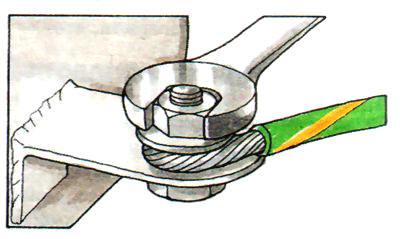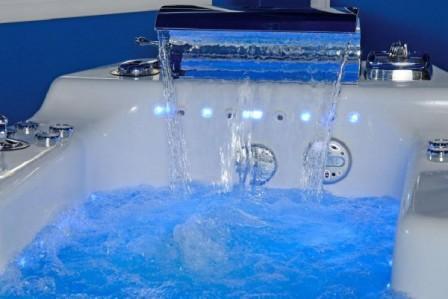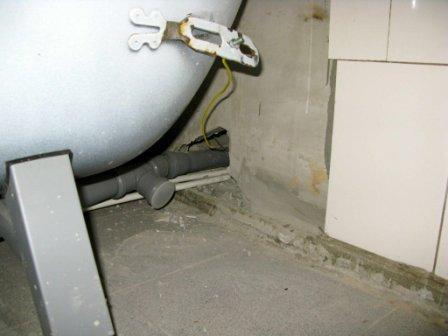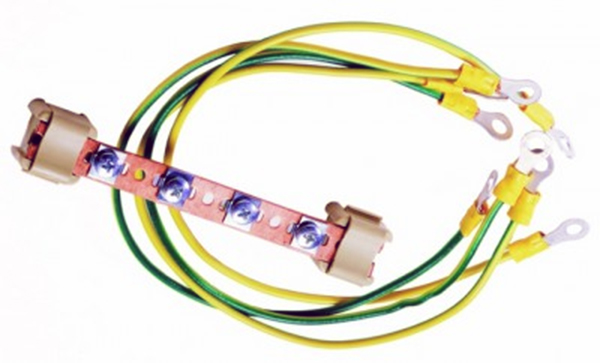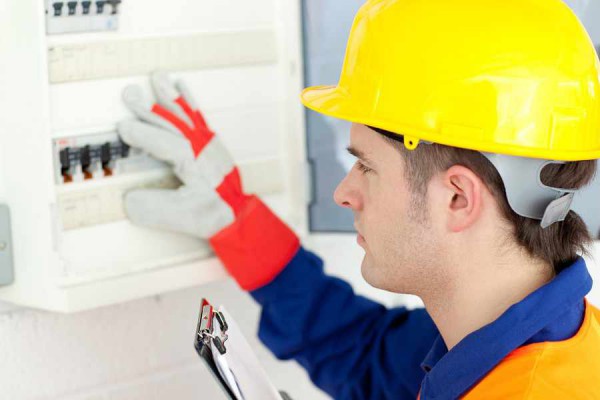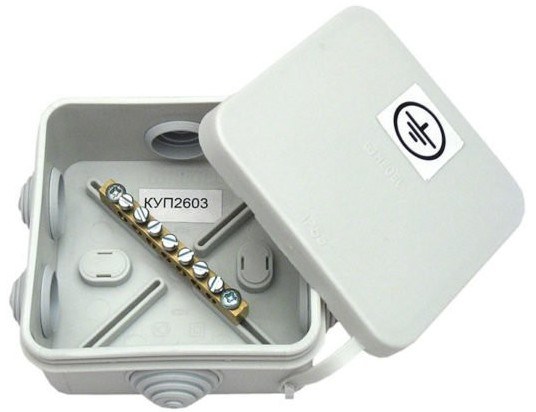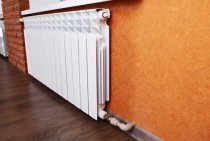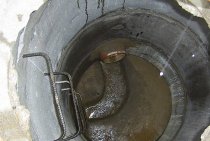Theory
Many electronic appliances these days have small metal grooves for grounding. This term refers to a special protection that takes the electric current when it appears on the body of the object and leads into the ground.
Everyone in their life has experienced mild electric shocks when touching electrical appliances. Quite often, this can happen if you touch a computer, washing machine or heating tank. In the latter case, this happens due to the formation of a hole in the heating element, due to which electricity passes through the water.
Often this happens for the reason that in our homes the electrical wiring was installed inappropriately. If there are grounding devices, this problem will not cause inconvenience.
Is an acrylic bath grounded?
Nowadays, acrylic bathtubs, which are light and affordable, are especially popular.
Although it is a polymer that is a dielectric (i.e. does not conduct current), such a bathroom still needs to be grounded for the following reasons
:
- casting and extrusion are two ways to produce an acrylic bath. The polymer produced by extrusion does not retain its shape well. It is the bowls made in this way that must be installed in a steel frame, which must be grounded;
- the acrylic bath is also grounded in order to remove static electricity. If the bowl is large, then this must be done, as this can lead to the fact that the bath will accumulate a strong electric charge.
Related videos
Protective grounding of the bath in the apartment is done for many reasons, the main of which is the increased humidity in the room and the associated risk of current leakage to the ground. This is explained by the fact that the water poured into the bathroom is a conductor of electricity, and the bath itself, one way or another, is in contact with the ground.
People unfamiliar with the basics of electricity, when discussing whether it is necessary to ground the bath, argue as follows. “Why ground the bath,” they say, if it is insulated from the floor screed with a layer of ceramic tiles?
But at the same time, many people forget that its metal body is still connected to the ground through a system of water and sewer pipes.
Because of this, the touch of a washing person to a faulty electrical appliance (to the wire of an electric razor with broken insulation, for example) can cause a dangerous electric shock.
Therefore, making grounding in the bathroom is a paramount task to protect the user from strong electroshock effects.
Add to this that reliable grounding in the bathroom performs a triple function:
- firstly, when a dangerous leak occurs, it triggers a protective device (RCD), which instantly de-energizes the room;
- secondly, if due to low currents the RCD did not work (or turned out to be faulty), then if grounding is present, the voltage at the point of contact will drop to a safe level for some time;
- and finally, it equalizes the potential of all metal objects in the bathroom connected to a common grounding device (GD) for the house.
In the second case, the probability of a critical injury to a person who has felt an electric shock is much reduced, which becomes the answer to the question of why the bathroom needs to be grounded.
Grounding the Jacuzzi
"Jacuzzi" - a whirlpool bath that runs on 220V and has a frequency of 50 Hz.
To connect and install the hot tub, the room must have a separate grounded socket. It must be equipped with shutters, due to which access to the plug is closed.In addition, a third plug is required, which will play the role of grounding. This socket is protected against splash water, so there is no possibility of a short circuit.
The socket must be mounted at a height of at least 50 cm from the floor and at a distance of at least 70 cm from the edge of the hot tub. The cable is double or triple insulated.
It is necessary to install an automatic machine that can withstand a load of 16 amperes so that there is no possibility of damage to the electrical equipment of the bath, which can be caused by a sudden voltage drop. Also, an RCD device should be located outside the bath room.
Using a hot tub that is connected to an ungrounded outlet is strictly prohibited.
In addition, hot tubs must not be grounded through heating, sewerage and water supply systems.
This work should only be carried out if the hot tub is disconnected from the mains. If the electrical cord is damaged, then you should not use such a bathroom; it is better to call professionals who will repair or replace it.
Grounding a metal bath
The normal way of wiring is to connect the bathtub with a special connection using a special ground bus. The busbar must be located on the switchboard.
Such a connection must be made in any room with a bathroom where there is electrical equipment.
Many apartments and houses are equipped with Soviet baths. If you have installed just such a plumbing fixture, then it is grounded as follows
:
- a hole is drilled in the foot of the bath using an electric drill with a drill bit. Subsequently, the grounding jumper is fixed with a bolt, nut and washer;
- the multi-core cable must be screwed to the bath leg on one side and to the distributor on the other. All wires from metal appliances must be connected to this cable;
- the distributor is fixed on the wall in a convenient place. It is brought to the ground bus of the input shield, which is located in the entrance;
Recently released steel and cast iron bathtubs are equipped with a special "petal" that is used for grounding. A ground wire is connected to it.
In this case, it is only necessary to strip the cable and clamp it between the washers of the petal, securing it with a bolt and nut;
If the bathroom has a shower equipped with an instant water heating function, or a heating tank, then they must also be grounded. The jumper in this case is made as follows: the metal elements of the device case are connected to grounded pipes.
Cable laying and self-assembly
To independently perform grounding, you need to choose a suitable wire. It must be selected according to the following characteristics:
- the cable must have the necessary rigidity and have a cross section of 6 square meters. mm;
- the wire must have a yellow-green insulation made of PVC material;
- cable length must be selected individually. It is preferable to choose a wire from 2 m, but keep in mind that an excessively long cable will cause a breakthrough;
- the aesthetic point is also important. It is unlikely that you will like it if the wires are in plain sight. Hide them behind panels or a screen, or run them on the side of the bath that is almost invisible;
- to save money, steel is usually taken as grounding electrodes, however, steel enclosed in a copper sheath, or just copper, have higher efficiency rates.
Bath grounding can be carried out according to some general rules:
- manufacturers do not forget to supply all modern bathtubs with a separate grounding petal. It looks like an eyelet with a hole. A ground wire is connected to such a petal;
- its bare fragment is clamped between washers that help secure the bolt and nut;
- if the bath was made back in the Soviet era, then you need to drill a hole in the leg or on the wing of the bath and in exactly the same way, using washers, a bolt and a nut, fix the grounding jumper.
If you do not have enough experience in electrical and installation work, then it is better to contact a professional electrician who will do the grounding for you. But even if you did it yourself, a specialist should check the operation of the ground jumper. Otherwise, you risk undesirable consequences.
There is another important point: many people confuse grounding with grounding. These are slightly different things, since zeroing is used only for industrial, but not for domestic purposes. And the confusion has come from the fact that recently zeroing has been done very often in apartments. This also applies to water heaters and washing machines. But it is not recommended to carry out zeroing in residential buildings, although at the same time it is not prohibited. Just imagine that the neutral wire burns out for some unknown reason or an electrician accidentally connects a phase instead of zero. As a result, all your devices will simply burn out from excessively high voltage. Yes, and the goals of zeroing and grounding are somewhat different. Zeroing is designed solely for the occurrence of a short circuit.
Selection of accessories for grounding the bath
Usually, in apartments and private houses, a stranded wire with a cross-sectional area of at least 6 square meters is used for grounding and grounding. mm. Such a cross-sectional area of the grounding conductor is quite enough to provide protection against electric shock to a person in a residential area. It is better to choose a copper cable, but in extreme cases, you can use aluminum wire or steel in a copper sheath. The ground conductor must be masked. This is necessary not only from an aesthetic point of view, but also to protect the ground from accidental damage. Typically, the cable is hidden in bathroom interior items, behind screens and plastic panels. A special distributor is used to connect the grounding of all items in the bathroom to a common bus.
Features of the modern method of grounding baths
In accordance with the standards for safe work, the grounding of the bath is carried out through a grounding bus, which is located on a common switchboard.
Important! In new buildings, you don’t need to think about how to ground the bathroom, since such work has already been completed. In other cases, such a procedure is necessary, and the amount of equipment in this room does not matter. electric current in the bathroom
In this case, you should not use the "grandfather" method, simply connecting the bowl with a sewer or water supply riser. In modern conditions, this option is not at all suitable, since many have replaced old pipes and risers with plastic.
Unfortunately, in many apartment buildings there is simply no grounding in the old building, but if it has been reconstructed, then you can safely proceed to work on protecting against the effects of electric current in the bathroom. In this case, you should not use the "grandfather" method, simply connecting the bowl with a sewer or water supply riser. In modern conditions, this option is not at all suitable, since many have replaced old pipes and risers with plastic.
Having decided on the need to ground the bathroom, you can invite a specialist, or do everything yourself, but you must follow the rules:
- The ground wire must have a sufficient cross section, for a bathroom this value is 6mm².
- Reliable polyvinyl chloride insulation must be checked, which should have a yellow-green color.The length is selected depending on the specific conditions, but the wire cannot be less than 2 meters. It must be laid in such a way as to exclude accidental damage and spoil the appearance of the room, for example, inside walls, behind a decorative screen, etc.
- If electrical devices that heat water are installed in the room, the ground connection must be made through a protective device that will ensure timely shutdown if necessary.
Important! When choosing grounding electrodes, preference should be given to copper products, since, compared to steel, they are more reliable and efficient. Savings in this case is inappropriate!. Now in the bathrooms there are both old, but still relevant steel and cast-iron bathtubs, as well as more modern options - made of acrylic
Frequent and "jacuzzi". Despite the rather large similarity of the work performed, each of these options has some features that you should be aware of in order not to make mistakes when solving the question: “How to ground the bath?”
Now in the bathrooms there are both old, but still relevant steel and cast-iron bathtubs, as well as more modern options - made of acrylic. Frequent and "jacuzzi". Despite the rather large similarity of the work performed, each of these options has some features that you should be aware of in order not to make mistakes when solving the question: “How to ground the bath?”
Which bath should be grounded
The modern market offers bathtubs made of different materials:
- 1. Cast iron.
- 2. Steel.
- 3. Acrylic.
How to make grounding in a bathroom with an acrylic bathtub? I must say that no one has problems with cast iron or steel, often there are questions regarding acrylic, how to ground the bathroom, and thereby protect yourself and all family members.
There is an opinion that acrylic itself is an excellent insulator and it makes no sense to ground the bathtub in an apartment from such material. But some people claim that acrylic, in turn, accumulates static electricity, and in order to remove this potential, it is recommended to perform grounding.
The power of static voltage is negligible, and it does not pose any threat to humans, although its value is quite high. And if we talk about rooms where there is a high level of humidity, then there is no static voltage at all.
In addition, a logical question arises, if necessary, how to ground a plastic bath?
There is one nuance that is worth considering, the installation is carried out on a metal frame, which in turn is an excellent conductor of electric current. That is, nevertheless, the process of grounding an acrylic product is also necessary, as is the case with cast iron and steel.
Grounding rules
The protective grounding of the bathroom is considered effective only if the conductor connected to it will have access to a full-fledged ground loop (GK).
It does not exist for the simple reason that in urban buildings the contour should be built on the street in the ground near the house, and these works were not previously provided for by building codes.
Another thing is a private house in which the owner can take the ZK to any place convenient for him outside the residential building and calmly ground the bath and other equipment.
In some modern urban buildings, the power supply to the apartment is carried out using a 3-core cable, in which, in addition to phase and zero, there is also a special ground wire. It is output to a separate grounding contact in the shield and is used just as an "assembly" of protective conductors. In this case, the usefulness of the action of such grounding will be guaranteed.
Thus, before grounding the bath in the apartment, it is important to make sure that there is a special grounding contact in the switchboard. In its absence, as a temporary protection measure, you will have to use an RCD, the installation of which in the bathroom in this case is mandatory
We will consider the procedure for arranging protective grounding with our own hands using the example of outdated baths
In its absence, as a temporary measure of protection, you will have to use the RCD, the installation of which in the bathroom in this case is mandatory. We will consider the procedure for arranging protective grounding with our own hands using the example of outdated bathtubs.
